-
Reagents
- Flow Cytometry Reagents
-
Western Blotting and Molecular Reagents
- Immunoassay Reagents
-
Single-Cell Multiomics Reagents
- BD® OMICS-Guard Sample Preservation Buffer
- BD® AbSeq Assay
- BD® Single-Cell Multiplexing Kit
- BD Rhapsody™ ATAC-Seq Assays
- BD Rhapsody™ Whole Transcriptome Analysis (WTA) Amplification Kit
- BD Rhapsody™ TCR/BCR Next Multiomic Assays
- BD Rhapsody™ Targeted mRNA Kits
- BD Rhapsody™ Accessory Kits
- BD® OMICS-One Protein Panels
- BD OMICS-One™ WTA Next Assay
-
Functional Assays
-
Microscopy and Imaging Reagents
-
Cell Preparation and Separation Reagents
Old Browser
This page has been recently translated and is available in French now.
Looks like you're visiting us from {countryName}.
Would you like to stay on the current location site or be switched to your location?
Overview
The BD® OMICS-Guard Sample Preservation Buffer is developed and optimized to address the need for high-quality biological sample preservation over an extended period of time when samples cannot be processed at the same time or location.
- Provides a stress-free, one-step preservation protocol with minimum hands-on time
- Optimized to preserve cells for a variety of downstream transcriptomic, proteomic and multiomic applications, including RNA-seq, CITE-seq, flow cytometry and qPCR
- Protects cell viability and preserves different cell populations in your samples for up to 72 hours at 4 °C
- Developed and tested across multiple sample types: PBMCs and tissue samples
- Available in two, easy-to-use formats: 50-mL bottle or 12 x 1-mL vials
Download our datasheet to learn more about the BD® OMICS-Guard Sample Preservation Buffer.
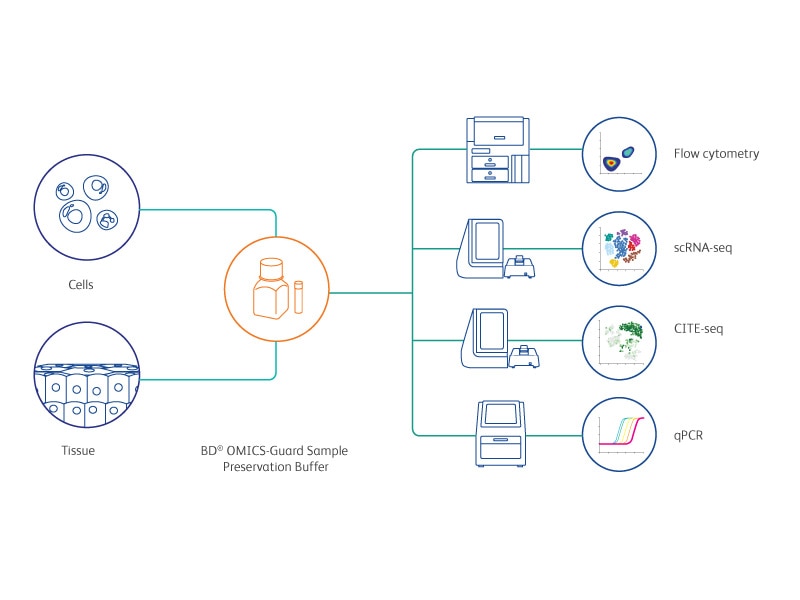
Watch our webinar on how the BD® OMICS-Guard Sample Preservation Buffer is used in the single cell multiomics analysis of tumor samples and showed how it can reveal the immunogenomic mechanisms of immune suppression and cancer immunotherapy.
The speakers also shared their findings on the role of PD-1 expression and metabolic reprogramming in Treg cells and how they affect the response to PD-1 blockade in different tumor types and microenvironments.
One-Step Sample Preservation Workflow
| Single-Cell Suspension | Tissue | |
Recommended Usage | 1 to 10 million cells per 1 mL BD® OMICS-Guard Preservation Buffer | 30 to 50 mg of tissue per 20 mL BD® OMICS-Guard Preservation Buffer |
Storage Temperature | 4 °C | |
Storage Duration | Up to 72 hours | |
|
| |
Modifications to single-cell capture on the BD Rhapsody™ Single-Cell Analysis System | For cells/tissues preserved in BD® OMICS-Guard Preservation Buffer, change the lysis conditions in the single-cell capture workflow from 2 minutes to 5 minutes lysis time. | |
Improve Ab-Oligo Signal with the BD® AbSeq Enhancer Kit for BD® OMICS-Guard Buffer-Preserved Samples in CITE-seq
If staining with BD® AbSeq Antibody-Oligos after BD® OMICS-Guard Buffer preservation, use the BD® AbSeq Enhancer Kit to reduce nonspecific binding events and enhance the AbSeq signal.
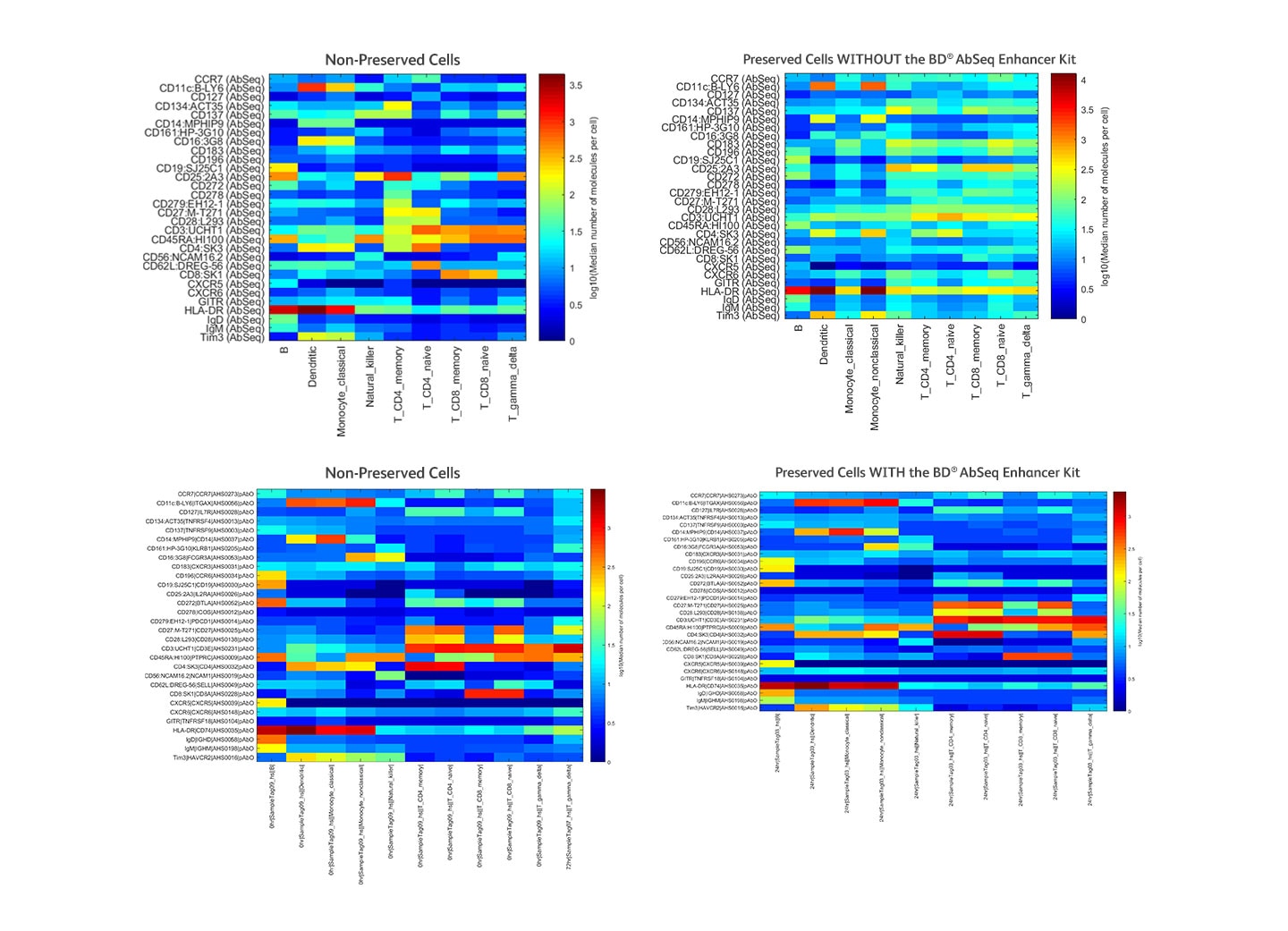
Heatmaps of AbSeq performance with and without the addition of the BD® AbSeq Enhancer Kit. Heatmaps of AbSeq median molecules per cell expression for different cell types are shown when the BD® AbSeq Enhancer Kit is either not added to the protocol (top) or added to the protocol (bottom) when using preserved cells. Nonspecific background signal (top) is eliminated, leading to better signal/noise, with the use of the BD® AbSeq Enhancer Kit (bottom), which closely matches that of the control data (bottom, left plot).
Download the BD® OMICS-Guard Sample Preservation Buffer product information sheet to access BD® AbSeq Enhancer Kit staining protocols
Applications
A time course CITE-seq analysis was conducted on the BD Rhapsody™ Single-Cell Analysis System with non-preserved (control) human PBMCs (0 h) and BD® OMICS-Guard Buffer-preserved human PBMCs at 24, 48 and 72 h. PBMCs at each time point were stained with a 30-plex BD® AbSeq Ab-Oligo Panel. Cell viability, gene expression, surface protein expression and the cell population in the preserved PBMCs at 24, 48 and 72 h were analyzed and compared to that of the control PBMC sample (n = 2)

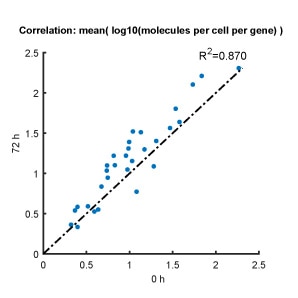


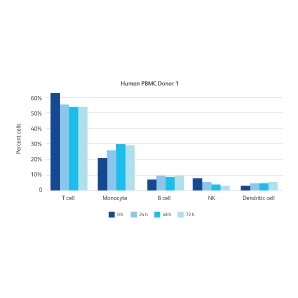
A time course CITE-seq analysis was conducted on the BD Rhapsody™ Single-Cell Analysis System with non-preserved (control) mouse spleen tissues (0 h) and BD® OMICS-Guard Buffer-preserved mouse spleen tissues at 24, 48 and 72 h. Dissociated mouse splenocytes at each time point were stained with a 30-plex BD® AbSeq Ab-Oligo Panel. Cell viability, gene expression, surface protein expression and the cell population in preserved mouse spleen tissues at 24, 48 and 72 h were analyzed and compared to that of control mouse spleen tissues (n = 2).




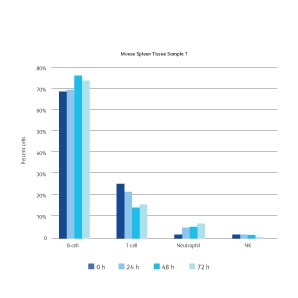
A time course flow cytometry analysis was conducted using non-preserved (control) human PBMCs (0 h) and BD® OMICS-Guard Buffer-preserved human PBMCs at 24, 48 and 72 h (n = 2). Human PBMCs at each time point were stained with a 13-color fluorescence antibody panel for major immune cell population identification and protein expression analyses and control (0 h) and preserved (24, 48 and 72 h) human PBMCs were compared.



A time-course flow cytometry analysis was conducted using non-preserved (control) mouse spleen tissues (0 h) and BD® OMICS-Guard Buffer-preserved mouse spleen tissues at 24, 48 and 72 h (n = 2). Dissociated mouse splenocytes at each time point were stained with an 11-color fluorescence antibody panel for major splenic cell population identification and protein expression analyses and control (0 h) and preserved (24, 48 and 72 h) mouse spleen tissues were compared. The protein expression level and frequencies of major cell populations revealed by flow cytometry analyses in mouse splenocytes stayed consistent over the course of 72 hours, indicating the capability of BD® OMICS-Guard Preservation Buffer to preserve surface protein epitopes and cell composition for flow cytometry analyses.



Expression of 84 stress-associated genes were compared between fresh and preserved human PBMC samples using qPCR (n = 2). No significant expression changes of stress-associated genes were observed after 48 h of preservation, indicating a stress-free preservation workflow with BD® OMICS-Guard Preservation Buffer.


For Research Use Only. Not for use in diagnostic or therapeutic procedures.
Alexa Fluor is a trademark of Life Technologies Corporation. CF is a trademark of Biotium, Inc. Cy is a trademark of Global Life Sciences Solutions Germany GmbH or an affiliate doing business as Cytiva.



